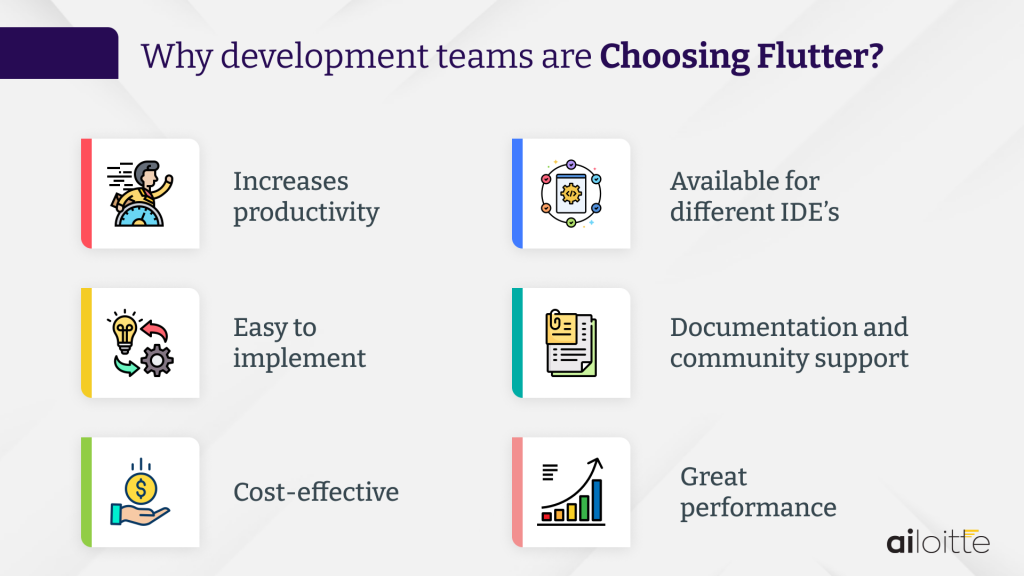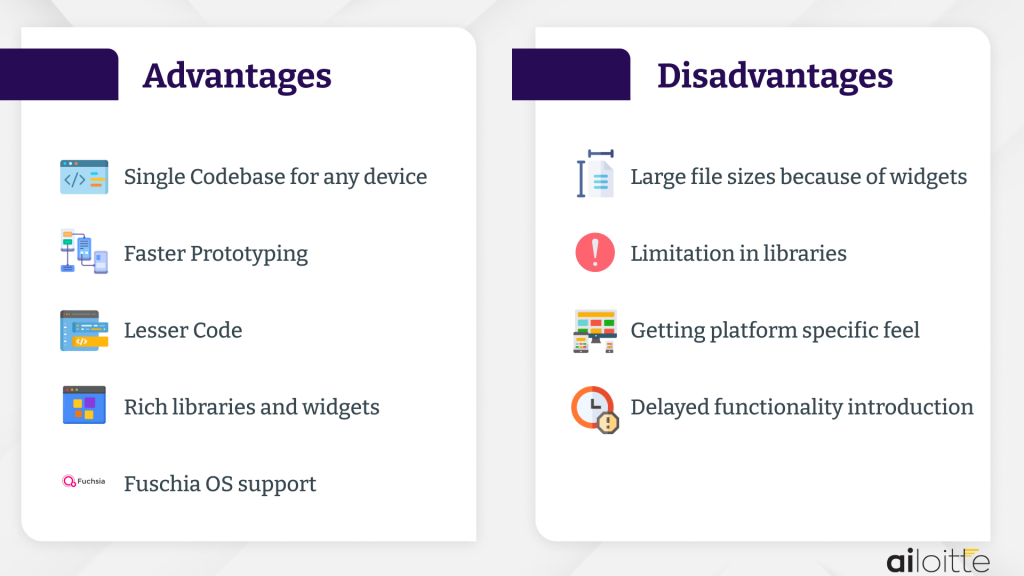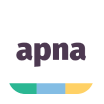What is Flutter and why is it making a splash in the mobile app development market?
Flutter is a free and open-source UI that uses Dart as its core Flutter coding language for creating cross-platform mobile applications using a single codebase. Developed and launched in 2018 by Google, it has been growing ever since in popularity and use.
As per Statista, Flutter is the most popular cross-platform mobile framework used by global developers, according to a study conducted in 2021. The idea behind Flutter for app development is to help developers build beautiful, natively compiled mobile, web, and desktop applications using a single codebase. For this, the framework uses the Software development kit (SDK) and widget-based UI library. The library consists of various reusable UI elements such as sliders, buttons, and text inputs.
Flutter technology is almost the perfect toolkit for cross-platform development, making building iOS and Android apps more straightforward and faster. With its increasing popularity, Flutter is becoming more likely the preferred technology on which many apps are currently being built worldwide. A few well-known examples of e-commerce service providers, such as eBay and Alibaba, use Flutter programming to give their mobile and web apps a uniform look and feel.
So, what makes it such an attractive choice for mobile app development? This blog will answer that by exploring some of Flutter’s pros and cons and its possibilities.
Why development teams are choosing Flutter
Flutter makes cross-platform app development possible without compromising on quality. Let us now see some reasons why development teams are choosing Flutter.

- Increases productivity
Businesses can use the same codebase for both iOS and Android, saving time and resources. Also, the native widgets of Flutter minimize the time spent on testing and ensure no Flutter compatibility issues with different versions of the OS.
- Easy to implement
Without a lot of code or the need to access OEM widgets, you can quickly build native mobile applications with an appealing user interface with Flutter programming language.
- Cost-effective
Businesses can build iOS and Android apps with the same code base so you can save the price of one.
- Available for different IDE
Developers can choose between Android Studio or VS Code to edit their code for Flutter development.
- Documentation and community support
Flutter language has plenty of resources, thanks to ample online documentation and community hubs for exchanging ideas.
- Great performance
Flutter SDK provides 60 frames per second performance speed, which is the same as other native apps.
How to Build a Progressive Web App (PWA)
Advantages and Disadvantages of Flutter app development
Every programming language has pros and cons. But, we can say that the advantages of Flutter outweigh the disadvantages when compared to other technologies. Let’s take a look at them.
Advantages of Flutter app development
1. Single Codebase for Any Device
Flutter’s code reusability allows developers to write just one code that can be used for Android, iOS, web, desktop, and more. So the number one reason why developers and entrepreneurs choose Flutter application development is that the development time cuts down significantly and you can launch your app faster.
2. Faster Prototyping
One of the core aspects that convinces Flutter developers and companies to go for this framework is the Hot reload function for Flutter mobile apps. Using this feature, they can view the changes they want to be made to the code in real time without the need to restart the app. The source code can be updated in running condition, and changes can show up in real time.
The entire process is improved using the hot reload function, and Flutter app developers can quickly identify the bugs and test new features or UI without any hassle.
3. Lesser Code
Flutter coding language, which is Dart, is strongly typed and object-oriented. The coding style is declarative and reactive, which enhances the app’s overall performance and start-up time.
Moreover, Flutter and Dart use a ‘Just-in-Time’ compilation that enhances the development workflow as the hot reload feature can get the UI refreshed during development.
4. Rich libraries and widgets
Flutter for Android and iOS has a fast and mature open-source graphics library that redraws its UI every time a view changes. This leads to quicker loading and a smooth flutter app experience.
The widgets are a great help when creating platform-specific visuals for the app. At the same time, you need not worry about how the UI looks on different devices.
5. Fuchsia OS support
Fuchsia is a new OS that Google is currently working on for smartphones (which is believed to replace Android in the future). Flutter apps will be compatible with Fuchsia, and all businesses have to do is deploy the apps while other apps may still be contemplating the changes.
Disadvantages of Flutter
Like many other programming languages in the app market, Flutter packages have their own limitations listed below.
1. The large file sizes because of widgets.
Flutter apps are huge and occupy a lot of space. It may take longer to download or update. Google is working towards optimizing the size but as of today, this could be a concern for small-sized apps as inbuilt widgets make the size larger.
2. Limitation in libraries
Although plenty of flutter libraries are present, the framework is comparatively new, and businesses may not find the needed functionalities. This means the developers need to create a functionality they need from scratch, which can be more time-consuming and incur costs when compared to using existing functionality.
3. Getting a platform-specific feel
Since a single code is used for all platforms, it becomes difficult to get a specific look for an individual platform. This might be a No-No for businesses who expect a specific design for Android or iOS. A separate codebase must be developed for each platform if specific designs are needed.
4. Delayed functionality introduction
The latest Android and iOS system updates are first introduced in their native SDKs. Flutter apps can see the new features with a delay common for hybrid or cross-platform apps. It can be mitigated as Flutters allows developers to easily add native code to the solution and implement the missing features.
The followings are some advantages and disadvantages of Flutter app development in a nutshell.

Summing Up
Flutter is undoubtedly the framework of future apps. As Google backs it, it is likely to see major upgrades in the coming years. The Flutter development environment presents exciting opportunities for modern app developers and businesses.
Building iOS and Android applications with the same codebase with a user-friendly interface makes Flutter mobile app development faster and more cost-effective.
Are you looking for a Flutter app development company? We at Ailoitte can help you develop a fast and future-ready app. Contact us for the opportunity and benefits of using Flutter app development for your project.
FAQs
Flutter is a free and open-source mobile UI framework created by Google that developers and organizations are using on a worldwide scale.
Flutter is one of the best solutions for mobile app development to develop apps for Android and iOS without having to write in a different language for each platform.
Flutter apps are written in the Dart language. Dart is an open-source, general-purpose, object-oriented programming language developed by Google in 2011.
The following apps are made in Flutter
– Google Ads.
– KlasterMe.
– Reflect.
– Xianyu by Alibaba.
– Postmuse – Instagram photo editing app.
– Take Your Seat.
– Lunching.
– Pairing.
Flutter is a popular frontend development framework from Google. Flutter is a multi-language support framework.
No. Businesses can use Flutter to make cross-platform, native applications, not just for UI.
Here are some well backed options for a Flutter app
1. Back4app
2. Firebase
3. Parse
4. AWS Amplify
5. Backendless
Yes, Flutter is made open source by Google for building beautiful, natively compiled, multi-platform applications from a single codebase.



















.png)
.png)
.png)



Your article gave me a lot of inspiration, I hope you can explain your point of view in more detail, because I have some doubts, thank you.
Thank you for your feedback.
Thanks for sharing. I read many of your blog posts, cool, your blog is very good.